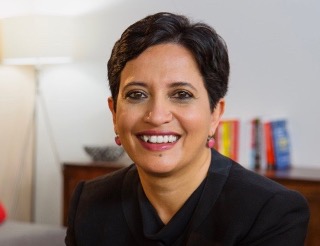Entrepreneur Case Studies
Building a Fashion E-commerce Business and Surviving Covid: Go Dash Dot CEO Hannah Fastov (Part 6)
Sramana Mitra: What level did you reach in 2019?
Hannah Fastov: In 2019, we did $4 million. Then the pandemic hit.
Sramana Mitra: How did that go?
Hannah Fastov: That was an interesting time for us. We’re selling an on-the-go bag and everybody’s staying home. We just had our shipment come in at the beginning of March 2020. All of our wholesale partners either postponed or cancelled their orders. We had a ton of inventory.
>>>Building a Fashion E-commerce Business and Surviving Covid: Go Dash Dot CEO Hannah Fastov (Part 5)
Sramana Mitra: That brings us to end of 2017. What kind of revenues were you tracking at?
Hannah Fastov: Close to a million. At this time, most of our revenue was coming in from our wholesale business but we were doing over $250,000 on our website. When we saw what was working in advertising, then we were able to put a bit more into our advertising and use our profits to reinvest back.
Sramana Mitra: What are the highlights of 2018?
>>>Building a Fashion E-commerce Business and Surviving Covid: Go Dash Dot CEO Hannah Fastov (Part 4)
Sramana Mitra: Tell me about traffic for the Shopify website. What strategy did you follow to drive traffic?
Hannah Fastov: After we launched our Shopify website, we started to engage with a digital advertising agency. I worked closely with them to develop this strategy of how we are going to get people to our website. We focused on Instagram and Facebook, more Facebook at that time. What we learned is that, like you mentioned earlier, who our customer was. It’s so important to define your demographic. For us, we felt like we were all over the place.
>>>Building a Fashion E-commerce Business and Surviving Covid: Go Dash Dot CEO Hannah Fastov (Part 3)
Sramana Mitra: The positioning was as a gym bag.
Hannah Fastov: We started as a gym bag. Our first trade show and our first target demo was either to the fitness instructor who was teaching four different classes all over the place who was always on the go. We also targeted the avid gym goer who is going to the gym and then straight to work or vice versa. Once we started to sell the bag, I learned that it was so much more than that. A lot of people were using it for the gym but also for travel, baby bag, or tennis bag. We started to evolve into more of a lifestyle accessories brand.
>>>Building a Fashion E-commerce Business and Surviving Covid: Go Dash Dot CEO Hannah Fastov (Part 2)
Hannah Fastov: For six months, I couldn’t stop thinking about this idea. In January of 2016, I googled “New York handbag designer”. I found my designer who had been with me since the beginning. She helped me commercialize my ideas. She took what I wanted, made it into a bag that had the potential to sell, and created everything that we needed to send to a manufacturer.
>>>Building a Fashion E-commerce Business and Surviving Covid: Go Dash Dot CEO Hannah Fastov (Part 1)

Excellent story of a fashion e-commerce entrepreneur bringing to market a range of new bags.
Positioning, customer acquisition, business development, partnerships – many topics are dealt with in great detail in this conversation. Enjoy!
Sramana Mitra: Let’s start at the very beginning of your journey. Where are you from? Where were you born and raised? What kind of background?
>>>Building a Global AI Venture for Medical Imaging Analysis from India: Prashant Warier, CEO of Qure.ai (Part 7 )
Sramana Mitra: The lifetime value of the customer is much higher.
Prashant Warier: I don’t think we have had more than one or two churn. That means a lot to me. The lifetime value is high. Also, it takes time to activate a market. Once there is a reasonable number of users in a certain market, that is when you start seeing the cost of sales become low. Initially, you might have to spend a lot. If you look at the cost of sales, you might not be making money on that particular customer. Then you are hoping that you’ll make money on the 31st customer.
>>>Building a Global AI Venture for Medical Imaging Analysis from India: Prashant Warier, CEO of Qure.ai (Part 6)
Sramana Mitra: When did you enter the US? Before of after the Sequoia funding?
Prashant Warier: Just before the Sequoia funding, we hired our Chief Commercial Officer, but we didn’t have FDA clearance. FDA clearance came in 2021. Our real traction was in 2022. Even now, we are very small in the US. We have some commercial traction, but we’ve a long way to go. The other thing is that we are able to identify patients early.
>>>